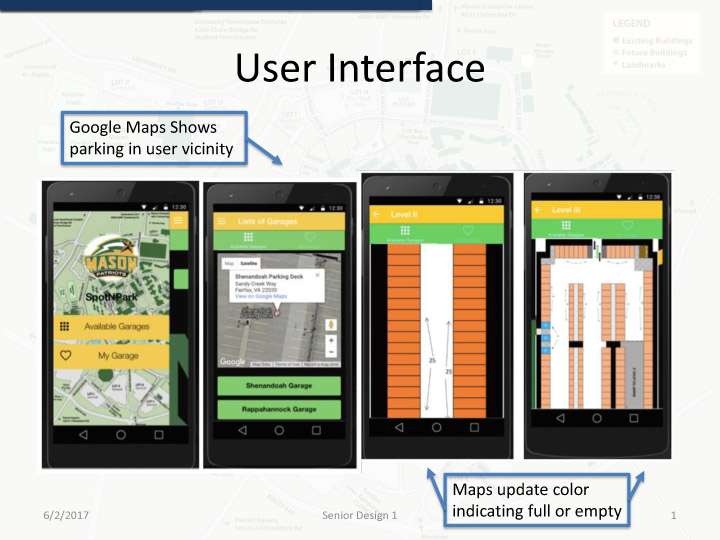
Engineering students developed the Parking Availability System as their senior capstone project. Image provided.
The sign says “Parking Lot Is Full,” but you have a suspicion that it’s not. An app and cloud-based sensor system developed by a team of six George Mason University seniors, would let you verify your suspicion—or confirm the full lot—with a glance at your smartphone screen.
The Parking Availability System—called PAS, until a more marketable moniker is created—was developed as the capstone senior design project by engineering students Firat Kara, Hugh Nguyen, Kaitlyn Nguyen, Amanda Renjifo, Tatania Rodriguez and Peter Thomsen. The students graduated in May from George Mason’s Volgenau School of Engineering.
Each student took a different aspect of the task and developed it over the course of two semesters. The result is an information chain that begins with ultrasonic sensors that detect a vehicle in a parking space and ends, after transmission of that data to a cloud-based server, with a sophisticated mobile phone app showing a map of parking spaces. The spaces are either red or green, indicating taken or open.
“The parking system app integrates novel technologies of sensing, communications, cloud and associated software to make information about the status of the parking spaces available to the users,” said Bijan Jabbari, the Electrical and Computing Engineering Department professor who worked with the students.
“This is a commercially viable system for practical use in commercial or public garages.” He added that Mason’s Office of Technology Transfer is evaluating how to commercialize the project.
Some public garages already have single-processing systems in place that indicate when a parking spot is available, but drivers have to be at the location to find an open space.
Hugh Nguyen, the student project manager, said this is the first parking system he knows of with a related app that reveals space availability remotely. He also believes it’s the first time this particular system’s architecture has been used for parking lots.
“And what else sets us apart is the lower cost” than existing systems for parking garage owners, he said. Once a system is installed, additional functionalities such as space reservations and payment by phone could be incorporated, he added.
The students have built a working model and have spoken with Mason’s parking services about how to demonstrate its capabilities.
“I think this a big accomplishment for this team and the students have worked very hard to make this happen,” Jabbari said. “They should be really proud of their results and the teamwork.”
